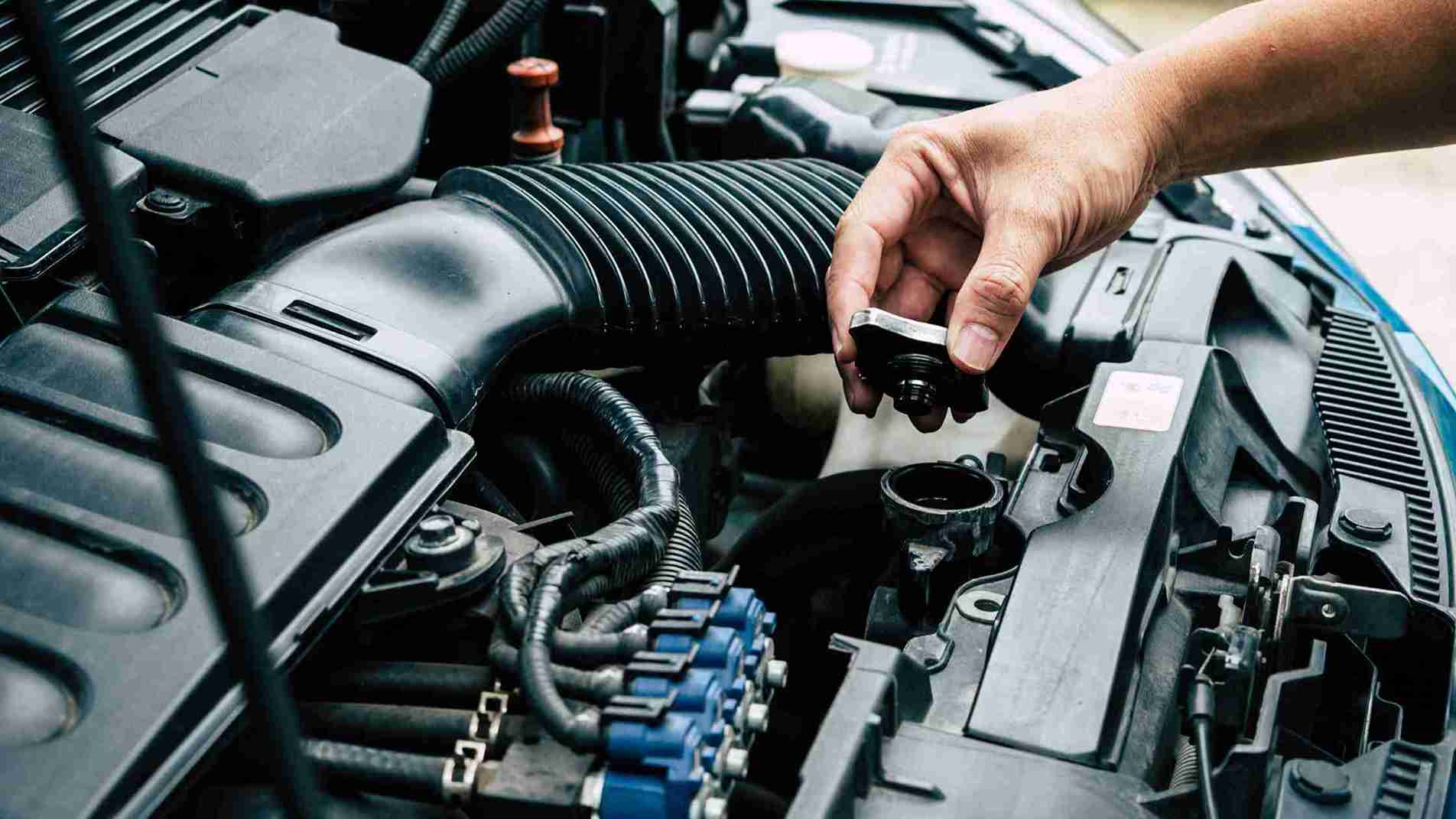Summer in DeSoto, Texas, can bring intense heat, which can put extra strain on your car’s radiator. A malfunctioning or neglected radiator can quickly lead to an overheating engine, which can cause long-term damage to your vehicle. For DeSoto drivers, understanding radiator care during the summer months is essential to avoid breakdowns and costly repairs.
In this article, we’ll discuss how to keep your radiator in top condition, what signs to watch for, and how to take preventive measures to ensure your car stays cool all summer long. We’ll also provide some practical tips that you can use to keep your vehicle running smoothly throughout the hottest months of the year.

Table of Content:
Why Radiator Care is Crucial in Summer
Your car’s radiator is part of the cooling system that prevents the engine from overheating. During summer, particularly in DeSoto, where temperatures often exceed 90°F, the risk of overheating increases. When your radiator isn’t functioning properly, it can’t cool your engine efficiently, leading to potential damage.
The radiator circulates coolant through the engine to absorb the excess heat. In high temperatures, the engine produces more heat than usual, so your radiator needs to work overtime to maintain a safe operating temperature. Neglecting radiator maintenance can leave you stranded on the road or, worse, lead to costly repairs that could have been avoided with simple care.
Signs Your Radiator Might Be Overheating
There are several warning signs that your radiator might be struggling to keep your engine cool. These signs are important to notice, especially during the peak summer months in DeSoto when temperatures can climb quickly. Here’s what to watch for:
- Warning Lights: Modern cars are equipped with temperature warning lights. If the engine gets too hot, this light will illuminate. If you see this light, pull over immediately to prevent further damage.
- Steam or Smoke from Under the Hood: If you see steam or smoke coming from under the hood, this is a clear sign that your engine is overheating. If this happens, stop the car and allow the engine to cool down.
- Coolant Leaks: Puddles of coolant under your vehicle or a noticeable drop in the coolant level in your radiator can be a sign of a leak, which could cause your engine to overheat.
- Unusual Engine Temperatures: If the temperature gauge in your car rises into the red zone, it means the engine is running too hot. Pay attention to fluctuations in engine temperature during your drive.
- Sweet Smell: If you smell something sweet, it could be coolant leaking from the radiator. This is a serious issue, and you should get your vehicle checked immediately.
Common Causes of Overheating Radiators
Understanding the reasons your radiator might overheat can help you prevent it from happening in the first place. Here are some common causes of radiator overheating that DeSoto drivers should be aware of:
- Low Coolant Levels: If your radiator is low on coolant, it won’t be able to effectively absorb heat from the engine. Regularly checking your coolant level is a simple but vital task.
- Clogged Radiator: Over time, debris and rust can accumulate inside the radiator. This prevents the coolant from flowing freely and can reduce its effectiveness in cooling the engine.
- Broken Radiator Fan: The radiator fan helps keep the coolant cool as it circulates through the radiator. If the fan stops working or is malfunctioning, the coolant can overheat quickly, leading to engine problems.
- Damaged Thermostat: The thermostat in your car controls the flow of coolant to the engine. If it becomes stuck or fails, it can prevent the coolant from reaching the engine at the proper time, leading to overheating.
- Worn-Out Radiator Cap: A damaged or loose radiator cap can cause coolant to escape or allow air to enter the cooling system. This can lead to an inefficient cooling process.
- Broken Water Pump: The water pump circulates coolant through the engine and radiator. If the pump fails, the engine will overheat due to the lack of coolant flow.
How to Check Your Radiator Fluid Levels
Regularly checking the radiator fluid levels is one of the easiest and most effective ways to avoid overheating. Here’s how you can do it:
- Allow the engine to cool: Never open the radiator cap while the engine is hot. Wait for the engine to cool down before checking.
- Locate the radiator cap: The radiator cap is usually located near the front of the engine, but it may vary depending on the make and model of your car.
- Check the fluid level: Most radiators have a “full” and “low” mark on the side of the reservoir. Make sure the coolant level is between these two marks. If the level is low, it’s time to add more coolant.
- Use the right coolant: Always use the type of coolant recommended by your car’s manufacturer. Mixing different types of coolant can cause the radiator to become ineffective and may lead to other issues.
The Importance of Regular Cooling System Maintenance
To ensure your car’s radiator works effectively, regular maintenance is key. The cooling system is a complex network of hoses, fans, and pumps, so keeping it in good condition will help prevent overheating and costly repairs.
- Flush the radiator: Flushing the radiator removes old coolant, rust, and other debris. Your mechanic should flush the radiator every 30,000 miles to keep the cooling system clean.
- Inspect the hoses: Hoses that carry coolant to the radiator and engine should be checked for cracks, leaks, or blockages. If they are in poor condition, replace them immediately.
- Check the radiator fan: Make sure the radiator fan turns on when the engine reaches a certain temperature. If the fan isn’t working, it could lead to overheating.
- Replace the thermostat: If your car’s thermostat is older than five years or showing signs of malfunction, replace it to avoid overheating problems.
Tips to Prevent Overheating in DeSoto’s Hot Summer
DeSoto summers can be harsh on your car, but with some proactive measures, you can keep your radiator in top shape:
- Avoid heavy driving during peak heat: If possible, avoid driving during the hottest parts of the day, usually between 12 PM and 3 PM. This will reduce the strain on your engine.
- Park in the shade: When parked, always try to leave your car in the shade or use a sunshade to protect the interior from excessive heat. This helps keep the engine cooler when you restart the car.
- Don’t overload your vehicle: Avoid overloading your car with heavy cargo, especially on long trips. Extra weight increases the strain on your engine and cooling system.
- Check the radiator before long trips: Before heading out for a road trip, make sure the radiator is properly serviced and the coolant level is topped off.
What to Do if Your Radiator Overheats
If your radiator does overheat despite your best efforts, here’s what you should do:
- Pull over safely: The first step is to safely pull over to the side of the road. Continuing to drive with an overheated engine can cause permanent damage.
- Turn off the engine: Turn off your vehicle to prevent further overheating. Let the engine cool down for at least 30 minutes before opening the hood.
- Check the coolant level: After the engine cools, check the coolant level and top it off if necessary.
- Call for help: If the engine doesn’t cool down after 30 minutes, or if the temperature keeps rising, it’s best to call a mechanic for assistance. Driving with a severely overheated engine can cause lasting damage.
9. Choosing the Right Mechanic in DeSoto
If your radiator continues to have problems, it’s time to visit a mechanic. Choose a mechanic in DeSoto that specializes in cooling systems. A trusted local mechanic will have the knowledge and experience to diagnose the problem and recommend the best solution. Look for reviews and testimonials from local residents to find a mechanic with a good reputation.
10. Conclusion
Taking care of your radiator in DeSoto, especially during the hot summer months, is vital for keeping your engine running smoothly and preventing costly repairs. Regularly checking coolant levels, scheduling maintenance, and staying alert to signs of overheating will help you avoid breakdowns and keep your car in optimal condition.
Remember, a little care and attention now can save you time, money, and frustration later. By following the tips in this article, you’ll ensure your radiator stays cool, even during the hottest Texas summers. Keep your car’s cooling system in good shape, and enjoy a smooth, trouble-free ride all year long.
FAQs
| To prevent radiator overheating in DeSoto’s summer heat, regularly check and maintain your coolant levels, inspect radiator hoses for leaks or damage, ensure the radiator fan is functioning properly, and schedule a cooling system flush every 30,000 miles. These proactive steps can help keep your engine cool and avoid costly repairs. |
Common signs of radiator overheating include the engine temperature gauge rising into the red zone, steam or smoke coming from under the hood, coolant leaks under the vehicle, and a sweet smell from the engine area. If you notice any of these signs, it’s important to address the issue promptly to prevent engine damage.
In DeSoto, TX, you can find radiator repair services at Goodmon’s Auto Repair, 1-800 Radiator & A/C-Desoto, and Gillette Automotive. These local shops offer radiator repairs, replacements, and maintenance services to keep your vehicle running smoothly.
In DeSoto’s hot climate, it’s recommended to flush your car’s radiator every 30,000 miles or as advised by your vehicle’s manufacturer. Regular flushing helps remove rust, debris, and old coolant, ensuring optimal engine cooling performance.
If your radiator overheats while driving in DeSoto, safely pull over to the side of the road, turn off the engine, and allow it to cool down for at least 30 minutes. Check the coolant level and top it off if necessary. If the issue persists, contact a local mechanic for assistance.
While some minor radiator issues can be addressed with temporary fixes like using a radiator sealant, it’s recommended to seek professional help for radiator repairs in DeSoto, TX. Local shops like Goodmon’s Auto Repair and 1-800 Radiator & A/C-Desoto can provide expert services to ensure your radiator functions properly.
Yes, Mobile Auto Repair Pros offers mobile mechanic services in DeSoto, TX. They can come to your location to diagnose and repair radiator issues, providing convenience and saving you time.
To choose a reliable radiator repair shop in DeSoto, consider factors like customer reviews, years in business, certifications, and the range of services offered. Shops like Goodmon’s Auto Repair, 1-800 Radiator & A/C-Desoto, and Gillette Automotive are known for their expertise and customer satisfaction.
The cost of radiator repair in DeSoto, TX, can vary depending on the extent of the damage and the specific services required. On average, radiator repairs can range from $150 to $900. It’s advisable to get a detailed estimate from a local repair shop before proceeding with any work.
To maintain your car’s radiator and prevent overheating, regularly check and maintain coolant levels, inspect for leaks or damage, ensure the radiator fan operates correctly, and schedule routine maintenance services. These practices can help extend the life of your radiator and prevent costly repairs.
